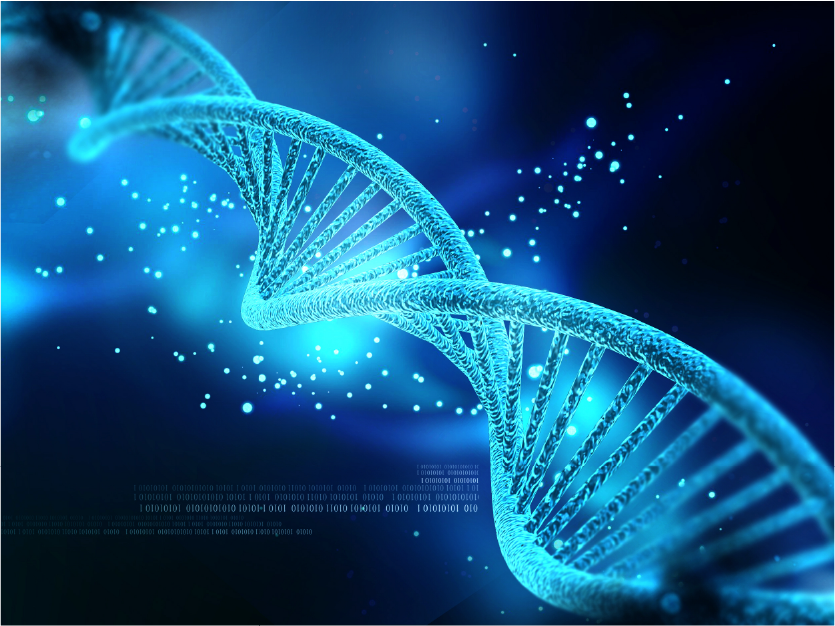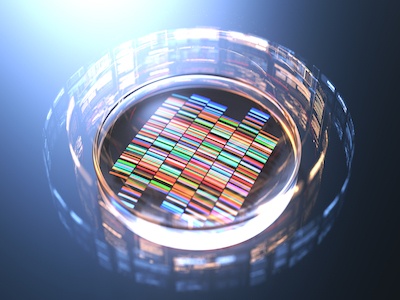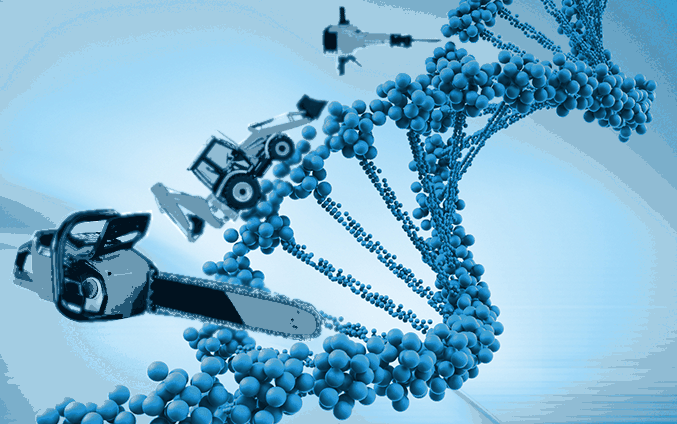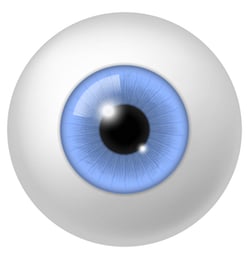 Since I’ve been living with it for as long as I can recall, I don’t consider my visual impairment a disability. Unlike the millions of people who require corrective lenses, though, my impairment is much more permanent and far less manageable, but it hasn’t prevented me from enjoying life and participating in physical activities. I thought I’d take this time to talk a bit more about most genetic disorders that affect vision, and what is being done to achieve a better understanding to try to reverse the vision loss.
Since I’ve been living with it for as long as I can recall, I don’t consider my visual impairment a disability. Unlike the millions of people who require corrective lenses, though, my impairment is much more permanent and far less manageable, but it hasn’t prevented me from enjoying life and participating in physical activities. I thought I’d take this time to talk a bit more about most genetic disorders that affect vision, and what is being done to achieve a better understanding to try to reverse the vision loss.
In the Public Eye: A Litany of Visual Disorders
I do wear glasses, as do many members of my family, but while they could probably improve their vision via LASIK if they chose, the congenital damage to my right eye is irreversible due to some form of retinal dystrophy. Retinal dystrophy is a term used to describe rare diseases where the retina is rendered inoperable, and many of these diseases are inherited. Because the retina is the key organ in the back of the eye that processes light signals into impulses that can be perceived and translated by the brain, anything that affects the photosensitive rods (for low light vision) and cones (for color vision) in the retina will result in a spectrum of dysfunctions, from not being able to see color, to night blindness, and potentially to complete blindness.
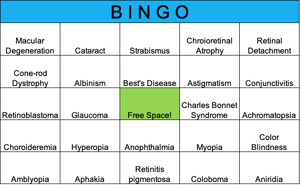 As if I was trying to win the eyeball BINGO, my left eye is nearsighted and has astigmatism, or an abnormally curved cornea, and the right eye, which already has the retinal dystrophy, also suffered from a retinal detachment, glaucoma, and aphakia, or a complete absence of the lens with some leftover scar tissue possibly from a botched surgery when I was too young to remember. I’m still far away from the full blackout (ha) on my BINGO card of eye conditions, and often I believe that if I were born in the Stone Age, I’d probably not have survived due to natural selection. Society, however, has refrained from killing me off and allowed many of these genetic conditions to persist. Thankfully, there are many more ophthalmologists and scientists dedicated to determining the root cause of these conditions and how to improve treatment strategies, or at least help sports officials see better so they’re more likely to make the right calls. 1
As if I was trying to win the eyeball BINGO, my left eye is nearsighted and has astigmatism, or an abnormally curved cornea, and the right eye, which already has the retinal dystrophy, also suffered from a retinal detachment, glaucoma, and aphakia, or a complete absence of the lens with some leftover scar tissue possibly from a botched surgery when I was too young to remember. I’m still far away from the full blackout (ha) on my BINGO card of eye conditions, and often I believe that if I were born in the Stone Age, I’d probably not have survived due to natural selection. Society, however, has refrained from killing me off and allowed many of these genetic conditions to persist. Thankfully, there are many more ophthalmologists and scientists dedicated to determining the root cause of these conditions and how to improve treatment strategies, or at least help sports officials see better so they’re more likely to make the right calls. 1
The Genetic Basis of Retinal Dystrophies
One of the earliest examples of non-Mendelian diseases I learned of was color-blindness, which is usually a sex-linked trait and therefore disproportionately affects more males than females. While those folks might not be able to find the number in those polka dot picture things the optometrist uses, they can at least see far better than other folks with retinal dystrophies. I admit I have no idea which mutations I have despite having done an ancestry DNA test (which said I was at least 90% Han Chinese, because obviously), but it was very enlightening to learn about the main culprits that drive the conditions.
 Development of normal vision starts at a very young age, so it makes sense that many studies of visual impairments are conducted by pediatricians. There are over 120 causative genes that have been identified, and some mutations in the same genes can result in disparate disease phenotypes, adding another layer of complexity in studying these disorders. 2 Most studies focus on the most prevalent form of retinal dystrophy, retinitis pigmentosa, which is a rod-cone disease that is characterized by progressive deterioration of night vision and eventually peripheral vision as the photosensitive cells in the retina die. Over 60 genes are associated with retinitis pigmentosa, which have functions in transduction of visual signals, metabolism, splicing, retinal development, and structure. 2 These include rhodopsin, a rod photoreceptor, and RPE65, a retinal isomerase that regenerates retinal. 2, 3 Genes such as PDE6C and GNAT1 are responsible for further visual transduction in rods and cones. 2, 4 Various splicing factors and even microRNAs, including MiR-204, can affect ocular development. 5 While the list of disease-associated genes is huge, these resources provide an important jumping point to develop new therapies to reverse vision loss.
Development of normal vision starts at a very young age, so it makes sense that many studies of visual impairments are conducted by pediatricians. There are over 120 causative genes that have been identified, and some mutations in the same genes can result in disparate disease phenotypes, adding another layer of complexity in studying these disorders. 2 Most studies focus on the most prevalent form of retinal dystrophy, retinitis pigmentosa, which is a rod-cone disease that is characterized by progressive deterioration of night vision and eventually peripheral vision as the photosensitive cells in the retina die. Over 60 genes are associated with retinitis pigmentosa, which have functions in transduction of visual signals, metabolism, splicing, retinal development, and structure. 2 These include rhodopsin, a rod photoreceptor, and RPE65, a retinal isomerase that regenerates retinal. 2, 3 Genes such as PDE6C and GNAT1 are responsible for further visual transduction in rods and cones. 2, 4 Various splicing factors and even microRNAs, including MiR-204, can affect ocular development. 5 While the list of disease-associated genes is huge, these resources provide an important jumping point to develop new therapies to reverse vision loss.
Doctor My Eyes: Avenues to Effective Therapies
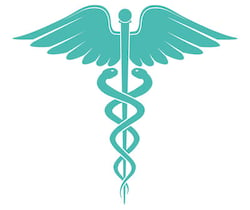 With advances in next-generation sequencing platforms and gene editing, there has been an acceleration in the development of genetic therapies to restore vision in retinal dystrophy patients. 2-4 There are some experimental methods involving retinal implants wherein an electronic device attaches to the retina and uses the remaining functional nerve cells to transmit signals to the brain to at least simulate a form of vision. 2 Genetic strategies involve re-introducing a normal copy of a vision gene, such as RPE65, into the retinas of patients. 2, 3 In the United States, the FDA approved a gene therapy for retinal dystrophy called Luxturna, which is prescribed for patients who have RPE65 mutations and retain enough functional retinal cells for efficacy. 3 Animal studies have also shown that vision could be restored with gene therapy by delivery of rod and cone genes, such as GNAT1. 4
With advances in next-generation sequencing platforms and gene editing, there has been an acceleration in the development of genetic therapies to restore vision in retinal dystrophy patients. 2-4 There are some experimental methods involving retinal implants wherein an electronic device attaches to the retina and uses the remaining functional nerve cells to transmit signals to the brain to at least simulate a form of vision. 2 Genetic strategies involve re-introducing a normal copy of a vision gene, such as RPE65, into the retinas of patients. 2, 3 In the United States, the FDA approved a gene therapy for retinal dystrophy called Luxturna, which is prescribed for patients who have RPE65 mutations and retain enough functional retinal cells for efficacy. 3 Animal studies have also shown that vision could be restored with gene therapy by delivery of rod and cone genes, such as GNAT1. 4
While my retina had deteriorated too extensively for any of these therapies, the advances in gene editing and gene delivery will hopefully lead to a sufficient restoration of vision that will improve patient quality of life. Vision is integral to our appreciation of our surroundings, art and movies, giving us a fuller picture for our experiences. Everyone deserves the best vision possible, and medical science will strive to provide that to all.
References
- Baptista et al. (2017) “Vision in high-level football officials.” PLoS One 12(11)e0188463 (Epub).
- Nash et al. (2015) “Retinal dystrophies, genomic applications in diagnosis and prospects for therapy.” Transl Pediatr 4(2):139-163.
- Maguire et al. (2021) “Clinical Perspective: Treating RPE65-Associated Retinal Dystrophy.” Mol Ther 29(2):442-463.
- Nishiguchi et al. (2018) “Retained Plasticity and Substantial Recovery of Rod-Mediated Visual Acuity at the Visual Cortex in Blind Adult Mice with Retinal Dystrophy.” Mol Ther 26(10):2397-2406.
- Conte et al. (2015) “MiR-204 is responsible for inherited retinal dystrophy associated with ocular coloboma.” PNAS 112(25):E3236-E3245 (Epub).


